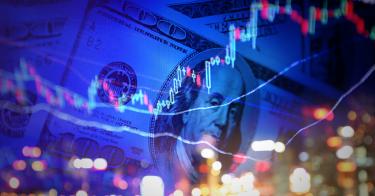If you can, put aside for a moment your opinion of Donald Trump’s words and actions and let’s be perfectly honest: One year into his presidency, could the economy be any rosier?
The economy grew at a rate of about 3 percent in the last three quarters, something that economists said was very unlikely just a year ago. The more than 40 percent increase in the Dow Jones industrial average since Election Day means a nearly $7 trillion jump in wealth. That has benefited the rich, yes, but every one of the 55 million Americans with a 401(k) plan, the 20 million with IRAs and the millions more with public and private pension plans have benefited, too. I would argue that investors are turning lower business tax rates on profits and the administration’s rollback of regulations into higher stock valuations.
The job market improved impressively under Barack Obama’s presidency after the Great Recession, when millions of jobs vanished seemingly overnight. But the past year’s continued decline in joblessness is impressive as well. In recent weeks, the number of new unemployment insurance claims and the unemployment rate for blacks and Hispanics have been at or near their lowest levels in more than four decades.
Then there is the cheerful news for the Rust Belt areas of the country: Blue-collar manufacturing, construction and mining jobs have risen by almost half a million in just one year.
All of this is punctuated by the daily news of more jobs, higher pay and fresh investment in America just one month into the Trump tax cut. Apple’splan to bring some $250 billion in profits back to America, create 20,000 jobs, open a new business campus and pay $38 billion in taxes to the Treasury Department is just the kind of response we hoped for from lowering corporate and repatriation taxes.
Fiat Chrysler has announced it is moving an auto factory to Michigan with 2,500 jobs. After decades of outsourcing jobs from America, companies are creating jobs here. In recent days, we have seen similar announcements of worker bonuses or new hiring from Disney, Home Depot, JPMorgan Chase, FedEx and other companies.
A new Quinnipiac poll finds that two-thirds of American voters now rate the economy as good or great, the highest number since the question was first asked 17 years ago.
Admittedly, these are short-term trends, based on just one year of Mr. Trump’s term. If I’ve learned anything as an economic analyst, it is that the stock market and economic winds can shift by the hour. But for now, it’s hard to see many dark clouds on the horizon. They will come, of course, as they do for almost every president. But few presidents can claim to have presided over the kind of economy the United States is enjoying now. And surely the primal screams from both the right and left that President Trump would ruin the economy now seem hysterical.
So who gets the credit for this surge? Most voters say President Obama — and, sure, he gets some because corporate balance sheets were healthy when Mr. Trump entered office. But there are several holes in this theory. For one, the economy was decelerating at the end of the Obama presidency, with the annual growth rate falling to an anemic 1.6 percent in 2016, and many economists warned of a recession.
If Mr. Trump had continued Mr. Obama’s policies, one might not credit him for today’s strong economy. But Mr. Trump has begun to systematically overturn Obama policies on taxes, regulations, energy, climate change, net neutrality, budget priorities and health care — as well as replacing Janet Yellen as chairwoman of the Federal Reserve. Trumponomics is Obamanomics in reverse.
In the first 18 months of the Reagan presidency, the economy plummeted and the president’s liberal critics triumphantly declared Reaganomics a failure. But by late 1982, with Reagan’s phased-in tax cuts finally kicking in, the economy exploded and quarterly growth rates hit 8 percent, job creation soared and Reagan won re-election in a 49-state landslide.
If the economy had nose-dived in 2017, there’s no doubt the media would have pounced on Trump policies as disgraceful failures. But with the economy red-hot, he gets little credit. That’s a double standard.
Ultimately, the most important statistical indicator for Mr. Trump will be wages for middle-income workers. They’ve been flat in real terms for 15 years, which more than anything explains the populist rebellion in 2016. So far, wages and salaries haven’t bumped up much, but we are betting that the tax cut will bring increased investment and a supertight job market with intense competition for workers leading to higher pay. This is already starting to happen at Walmart and other companies, and in fast-growing cities like Nashville and San Francisco.
If those wages go up, Mr. Trump may not get credit from the news media or Democrats, but it’s a good bet he will get re-elected.
This piece originally appeared in The New York Times




